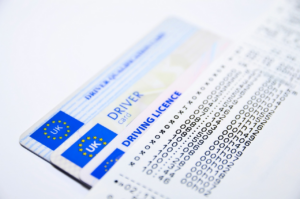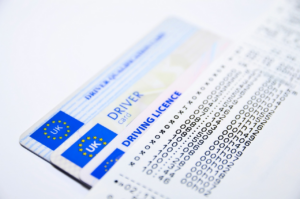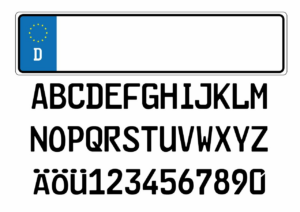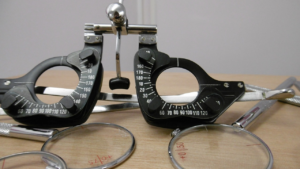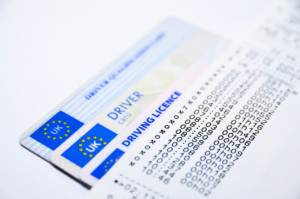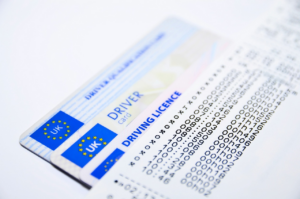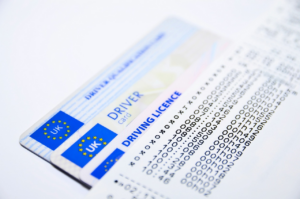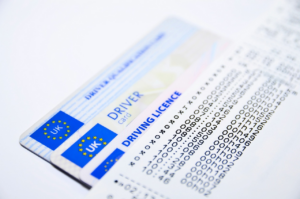Are you nervous about driving during the winter months? It’s no secret that winter driving can be challenging, but with the right knowledge and preparation, you can ensure a safe journey on the roads.
In this article, we will share seven winter driving tips and tricks to help you navigate the winter weather with ease. You may think that your regular driving habits will suffice during the winter, but the truth is, you need to adjust your driving style to suit the weather conditions.
It’s important to prepare your vehicle for winter, clear snow and ice from your vehicle, use winter tires, use your headlights, and be prepared for emergencies. By following these tips and tricks, you’ll be able to stay safe on the roads this winter.
So, let’s dive in and learn how to prepare for winter driving!
Prepare Your Vehicle for Winter
Get your car ready for the cold and icy roads ahead to ensure a stress-free ride. One of the most important things to do is to check your tires. Make sure they have enough air pressure and sufficient tread depth. In winter, it’s recommended to switch to winter tires as they provide better traction on snow and ice.
Check your brakes, too, to ensure they’re in good condition and can handle sudden stops on slippery roads. Another thing to consider is your car’s battery and electrical system. Cold temperatures can drain your battery faster, so make sure it’s fully charged and in good condition.
Check your windshield wipers and replace them if needed. It’s also important to have enough windshield washer fluid as salt and grime can accumulate on your windshield quickly in winter. By preparing your vehicle for winter, you can ensure a safer and smoother driving experience.
Adjust Your Driving Habits
You can easily improve your chances of making it to your destination by adjusting the way you drive on the road ahead. Winter driving requires a different approach, and by modifying your habits, you can ensure a safe journey. Here are some tips on how to do just that:
-
Slow down: The road conditions in winter are often slippery and unpredictable. To avoid skidding and losing control, it’s essential to drive at a slower speed than usual. Keep a safe distance from the car in front of you and anticipate stops and turns.
-
Brake gently: Sudden braking can cause your wheels to lock up and result in a skid. Use light and steady pressure on the brakes to slow down gradually. If you have anti-lock brakes, press down firmly and hold steady when braking.
-
Turn off cruise control: Cruise control is a useful feature, but it can be hazardous in winter conditions. It can cause your vehicle to accelerate when it should be slowing down, particularly on slippery surfaces.
-
Be mindful of hills: When driving uphill, keep enough momentum to avoid slipping backward. When driving downhill, use a low gear to control your speed and avoid overheating your brakes.
By following these simple adjustments, you can make your winter driving experience much safer. Remember to always stay alert, wear your seatbelt, and avoid distractions while on the road.
Safe travels!
Clear Snow and Ice from Your Vehicle
Before hitting the road in winter, it’s essential to clear your windshield and windows of any snow or ice for optimal visibility.
Don’t forget to remove snow from your roof to prevent it from falling and obstructing your view or damaging other vehicles.
Also, clear your headlights and taillights for better visibility, so other drivers can see you on the road.
Remember, taking these simple steps can help you avoid accidents and ensure a safer journey.
Clear Your Windshield and Windows
Make sure your windshield and windows are completely free of ice and snow so you can see clearly and avoid any potential dangers on the road. Here are some tips to help you clear your windshield and windows effectively:
-
Use a scraper: A good ice scraper is essential for clearing frost and ice from your windshield and windows. Make sure you have one handy before you start your journey.
-
Use warm water: Pouring warm water over your windshield and windows can help to melt the ice and make it easier to scrape away. However, make sure the water isn’t too hot, as this can cause the glass to crack.
-
Use a de-icer spray: De-icer sprays can help to melt the ice and make it easier to remove. Simply spray the solution onto the affected areas and wait a few minutes before scraping away.
-
Cover your windshield: If you know that snow or frost is likely, covering your windshield with a tarp or blanket overnight can help to reduce the amount of ice that forms, making it easier to clear in the morning.
Remove Snow from Your Roof
Don’t forget to clear the snow off your roof before hitting the road, as it can slide down and obstruct your vision or even cause an accident for other drivers.
Use a snow brush or a roof rake to remove all the snow from your vehicle’s roof, as well as any ice that may have accumulated. It’s not just about being courteous to others on the road; it’s also about ensuring your own safety.
If you hit the brakes suddenly, the snow on your roof can come crashing down, impacting your visibility and causing a dangerous situation.
Removing snow from your roof is especially important if you plan on driving on the highway, where high speeds and sudden movements can cause the snow to fly off your car and hit other drivers. Even if it doesn’t cause an accident, it’s still a hazard that can lead to damage to other vehicles.
So, take a few extra minutes to clear your roof before you start driving, and avoid putting yourself and others at risk. Remember, being safe on the road starts with being responsible and taking the necessary precautions.
Clear Your Headlights and Taillights
You may not realize it, but clearing the snow and ice off your headlights and taillights can greatly improve your visibility and ensure that other drivers can see you on the road. This is especially important during the winter months when visibility is reduced due to snow, sleet, and fog.
When your headlights and taillights are covered in snow, it can make it difficult for other drivers to see you, which can lead to accidents. To clear your headlights and taillights, use a soft brush or scraper to gently remove the snow and ice. Be careful not to scratch the lenses or damage any wiring.
If your headlights or taillights are particularly dirty or foggy, you may want to clean them with a specialized cleaner to improve their performance. Taking the time to clear your headlights and taillights may seem like a small task, but it can make a big difference in your safety on the road.
Use Winter Tires
If you’re looking for a safer winter driving experience, consider using winter tires. They offer better traction and handling on snow and ice, which can help you avoid accidents and slippage on the road.
It’s recommended to use winter tires when temperatures consistently drop below 7°C (45°F), so be sure to switch them out before the first snowfall hits.
Benefits of Winter Tires
Get ready to grip the road like never before with winter tires – they offer better traction and handling on snow and ice-covered roads. Here are some benefits of using winter tires during the chilly season:
-
Improved Traction: Winter tires are designed with a special tread pattern and rubber compound that provide better grip on slippery roads. They have deeper grooves and tread patterns that help evacuate snow and slush, allowing the tires to maintain contact with the road surface.
-
Better Braking Performance: Winter tires can reduce your stopping distance by up to 25%, thanks to their softer rubber compound and specialized tread design. This means that you’ll be able to stop your vehicle faster and more effectively in case of an emergency.
-
Enhanced Stability: Winter tires are built to provide better handling and stability in cold weather. They provide better control and reduce the risk of skidding or sliding, allowing you to drive with confidence even on icy roads.
Investing in a set of winter tires can be a wise decision, especially if you live in an area that experiences heavy snowfall or ice storms. With improved traction, better braking performance, and enhanced stability, winter tires can help you stay safe on the road during the winter season.
When to Use Winter Tires
Now that you know the benefits of winter tires, you might be wondering when to use them. The answer is simple: when the temperature drops below 7°C.
Regular all-season or summer tires harden in colder temperatures, reducing their grip on the road and making it harder to control your vehicle. Winter tires, on the other hand, are designed with a special rubber compound that stays pliable in cold temperatures, improving traction on snowy and icy roads.
Winter tires also have deeper tread patterns and more biting edges to better grip the road surface. It’s important to note that winter tires are not just for driving in deep snow; they are also effective on cold, dry pavement.
So, even if your area doesn’t get much snow, it’s still a good idea to switch to winter tires when the temperature drops. By doing so, you’ll increase your safety and reduce your risk of accidents while driving in winter conditions.
Use Your Headlights
Using your headlights is crucial for ensuring visibility and avoiding accidents in harsh weather conditions. It’s always a good idea to have your headlights on whenever you’re driving in winter, even during the day. This will make your vehicle more visible to other drivers, especially in the event of a snowstorm or heavy rain.
When driving in winter, it’s important to remember that visibility can be greatly reduced due to snow, fog, or rain. Your headlights can help you see the road ahead and any obstacles that may be in your way. They can also help other drivers see you, which is especially important if you’re driving on a highway or in heavy traffic.
So, make sure your headlights are on, keep them clean and properly aimed, and use them whenever necessary to stay safe on the road.
Be Prepared for Emergencies
Don’t forget to pack an emergency kit in your car, because being prepared for unexpected situations can mean the difference between getting help quickly or being stranded in a dangerous situation.
Here are five items you should include in your emergency kit:
-
First aid kit: In case of injuries or accidents, a first aid kit can help you provide initial medical care.
-
Blankets: In case you get stuck in cold weather, blankets can keep you warm and prevent hypothermia.
-
Flashlight: A flashlight can help you see in the dark and signal for help.
-
Water and snacks: In case you get stranded for a long time, water and snacks can keep you hydrated and energized.
-
Portable charger: A portable charger can help you keep your phone charged, which is important in case you need to call for help.
In addition to these items, you should also make sure your car has a full tank of gas, a spare tire, and a jack, in case you need to change a tire.
Being prepared for emergencies can help you stay safe and avoid dangerous situations on the road.
Stay Informed
Stay informed about potential road hazards and weather conditions by regularly checking your local news or weather apps. This will give you a heads up on any potential problems and allow you to adjust your driving accordingly.
It’s especially important to stay informed during the winter months when conditions can change rapidly. In addition to checking the news and weather, be sure to pay attention to any road signs or warnings that you encounter while driving.
These can include signs warning of black ice, heavy snowfall, or other hazards. If you see a warning sign, slow down and proceed with caution. Remember, it’s always better to be safe than sorry when it comes to winter driving.
By staying informed and aware of your surroundings, you can help ensure a safe and happy journey.
Conclusion: Stay Safe on the Roads This Winter!
It’s crucial to be aware of potential road hazards and weather conditions in order to ensure a smooth and stress-free winter travel experience. Remember to always check the weather forecast and road conditions before leaving for your trip.
Keep an eye out for snow and ice warnings, and plan accordingly. If possible, try to avoid driving during heavy snowfall or blizzard conditions.
Another important aspect of safe winter driving is to make sure your vehicle is properly equipped for the weather. This includes checking your tires for proper inflation and tread depth, as well as ensuring your brakes and windshield wipers are in good working condition.
Additionally, always carry an emergency kit in your car in case of an unexpected situation. By taking these precautions and staying informed, you can ensure a safe and enjoyable winter travel experience.
Stay safe on the roads this winter!
Frequently Asked Questions
How can I prevent my car windows from fogging up during winter drives?
To prevent your car windows from fogging up during winter drives, there are a few things you can do. Firstly, make sure your windows are clean and free from any dirt or debris, as this can contribute to fogging.
Secondly, use your air conditioning or defrost function to circulate air and reduce humidity inside the car. You can also crack a window slightly to allow for better ventilation.
Another tip is to avoid wearing wet clothes or bringing wet items into the car, as this can add moisture to the air and lead to foggy windows.
Finally, consider using anti-fog products such as sprays or wipes specifically designed for car windows. By taking these steps, you can ensure a safer, more comfortable winter driving experience.
Is it necessary to warm up my car engine before driving in the winter?
Before hitting the road in the winter, you may wonder if it’s necessary to warm up your car engine before driving. The answer is no, it’s not necessary.
Modern engines are designed to warm up quickly while driving, and idling your car for an extended period of time can actually cause harm to your engine.
Instead, start your car and let it run for 30 seconds to a minute before driving, and then take it easy for the first few minutes until the engine reaches its optimal operating temperature.
This will not only save you time and fuel, but also reduce emissions and prolong the lifespan of your engine.
So, skip the idle time and hit the road safely and efficiently this winter.
What should I do if my car gets stuck in the snow or ice?
If your car gets stuck in the snow or ice, there are a few steps you can take to get back on the road safely.
First, try to gently rock your car back and forth to gain traction. If this doesn’t work, try using sand or kitty litter under your tires to provide traction.
Alternatively, you can use a shovel to clear snow from around your car and create a path to drive on.
If all else fails, call for roadside assistance or a tow truck.
Remember to stay calm and patient, as getting out of a snowdrift can take time and effort.
Can I use regular all-season tires during winter months?
You may be wondering if you can use regular all-season tires during the winter months. While all-season tires are designed to provide good performance in a variety of conditions, they may not be the best choice for winter driving.
In colder temperatures, the rubber in all-season tires can become stiff and lose its ability to grip the road, resulting in reduced traction and longer stopping distances. Winter tires, on the other hand, are specifically designed to perform in cold and snowy conditions, with softer rubber compounds and deeper tread patterns that provide better traction on snow and ice.
If you live in an area with frequent winter weather, it’s a good idea to invest in a set of winter tires to ensure your safety on the road.
What emergency supplies should I keep in my car during winter?
To ensure your safety during the winter months, it’s important to keep emergency supplies in your car. These supplies should include:
- a blanket
- extra warm clothing
- food
- water
- a shovel
- an ice scraper
- a first aid kit
In case of an emergency, it’s also recommended to have:
- a flashlight
- extra batteries
- a phone charger
These supplies can help you stay warm and fed while waiting for help to arrive. Additionally, having a bag of salt or sand in your car can help provide traction on slippery roads.
Don’t wait until an emergency happens. Be prepared and keep these supplies in your car at all times.
Conclusion
So there you have it, seven winter driving tips and tricks to help you stay safe on the roads this winter.
Remember to prepare your vehicle for winter by checking your battery, brakes, and fluids.
Adjust your driving habits to account for the slippery roads and reduced visibility.
Clear snow and ice from your vehicle to improve your visibility and prevent accidents.
Using winter tires and headlights will also improve your safety on the roads.
And don’t forget to be prepared for emergencies by keeping a winter survival kit in your car.
Stay informed about weather and road conditions, and always err on the side of caution.
By following these tips and tricks, you can have a safe and stress-free winter driving experience.












































